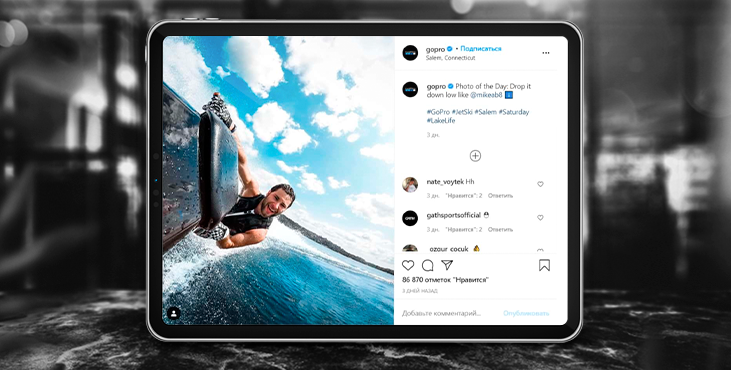
Types of social media content
The term SMM became more popular and strong at the beginning of the 2000s and was distributed by large companies that maintained accounts on StumbleUpon, LinkedIn and MySpace. During this time, content formats from rare niches (for the same HR LinkedIn) have grown into the public mainstream on Facebook and Instagram. It is possible to conditionally distinguish about ten types of content that are actively used by social media marketers in 2022.
Entertaining content.
The most popular type of content. This includes not only humor, memes and funny videos, but also life stories, comics. The purpose of such posts is not to convey information or enlighten a person (although this is also possible), but to surprise or make people laugh.
Entertainment content is based on the simplest feelings, so the index of engagement, likes and comments for such posts is usually higher than for other content.
Engaging content.
These are polls, discussions, tests and games. And there can also be brand reactions, tips, chats and engaging stories that the users like to comment on. Remember that people come to social networks not only for content, but also for communication. It is important to bring people into dialogue.
Information content.
This is news. News can be yours, market’s, news of a certain niche, relevant or not. This also includes reports, analytics, statistics i.e. all information that reflects an objective and measurable picture of the day (or time period).
Information can be:
Processed. For example, a news post on Telegram with personal opinion and criticism.
Raw. It sounds like an accomplished fact: “We are 10 years old!”, “We have a new catalog!”, “We are launching a new product”.
Selling content.
Advertising posts, links to products, product reviews and so on. The goal, as the name implies, is to sell. Selling content may be rare in the community. For example, once a day you report on current promotions and discounts. This format is suitable for large stores and retailers, bloggers and media.
By the way, lately brands have been building entire accounts around selling content — each post there advertises a product.
User Generated Content.
This is a good type of content that shows users that people are using the brand's products. A great example is the Instagram account of the action camera manufacturer GoPro. Almost the entire feed consists of spectacular videos and photos taken by extreme athletes. Reposts of such shots make people feel like a part of something bigger.

Useful content.
This is content that solves user problems. How to screw in a light bulb? What is HTML? How to write a sales text? In the post, the reader should receive all the answers (albeit in a compressed form). The main thing is to close the question. If you hide advertising in a useful post (even if native), then this is already selling content.
Video content.
Small videos, reviews, selections, interviews, presentations, advertising. In general, everything that moves and sounds.
Of course, a video can be selling, reputational, informational, and so on. We include it in a separate form because most users expect video content from brands, and text content is often in second place in popularity, according to Western market research. Interestingly, from 38% to 50% of the content is skimmed, so it is important to be able to grab the attention of the audience with a bright preview. However, this rule also works for text/images.
Streams.
Live broadcasts combine video and engaging content. But, unlike posts that can be posted at any time, you need to prepare for the stream: announce it, gather an audience for the broadcast, and make it interesting. Unfortunately, such content has become too popular and without an agenda (or a charismatic presenter) it will not work out well.
Podcasts.
Podcasts have been around for a long time, but are only just gaining momentum as a format and are still rarely seen on brand social media accounts. Podcasts are great for the media. For example, Gimlet Media maintains several headings at once: from news to historical topics, books and pop culture.
VR and AR content.
Virtual and augmented reality content appeared on Facebook and Instagram back in 2018 and only recently gained distribution thanks to the publication of the Spark AR editor in the public domain. Such content is often entertaining, but many brands use it for additional advertising. For example, Adidas advertises a new line of clothes using masks on Instagram, and Domino’s Pizza advertises pizza with cheese. You can learn more about promotion using masks in our blog.
Get an audit of your social media account as a bonus
Tell us what you think
By clicking 'Submit', you agree to Privacy Policy and authorise our staff to contact you. You are liable under the Personal Data Protection Act if you key in false personal data or other people’s personal data.
offers and news
